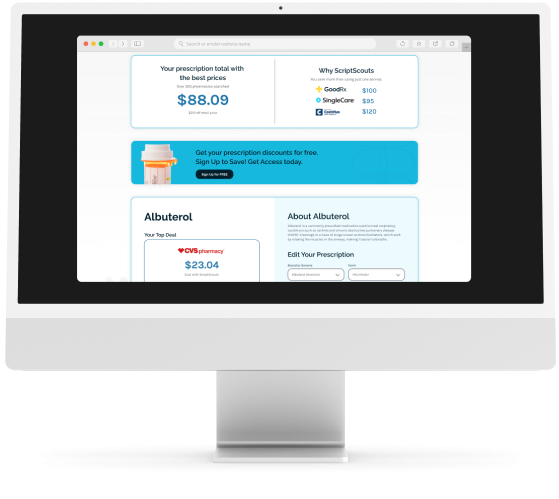Ahh, email marketing. The great workhorse of digital marketing! Everyone loves email marketing. And it’s so easy to do, right? I mean, you just create your message, drop it into that nicely designed email template, fire it out to your list and sit back while the results roll in.
Except email marketing isn’t that easy.
Yeah, that’s what I said: email marketing isn’t easy. And in today’s post, I’m going to show you why some of the things you thought you knew about email marketing are all wrong.
1. Email Deliverability is a Problem. A Big Problem
One out of every six people on your list will never see your message. How do we know? Because the experts at Return Path study this issue relentlessly and their most recent benchmark report found that 17% of email messages in marketing campaigns never make it to the inbox. Where do they go? That vast wasteland where your great offers go to die: the spam folder. And who put them there? The large email providers (think: Gmail and Yahoo) and Internet services providers (ISPs) like Comcast and TWC.
I know what you’re thinking: “But hey! I’m not a spammer. They can’t do that to me. These people are my subscribers. They ASKED to receive my email.” Well, friend, they can and they do. Why? Because the ISPs are trying to keep spam messages out of their customer’s inboxes and one of the signals they monitor is your engagement with subscribers, usually through clicks on the links to your products, content and offers.
You want to break the cycle of deliverability problems? You’ve got to do a better job of engaging the subscribers on your list by getting them to interact with your emails.
2. Your Subscriber List is Dying
I know. You’ve built a sizable list of email subscribers. And it is probably a pretty good list, too. The problem: about 25% of your list goes dead every year. That’s right: 1 out of every 4 subscribers on your list goes dormant. They change their email address to a new one and don’t tell you. Or, they simply stop using that email address. Or … well, you get the idea. They are gone.
To combat the problem, you have to continually work at developing your email list. You have to give people a reason to join the list. You’re going to need compelling offers, valuable information or inside access to your brand’s community.
3. One Size Doesn’t Fit All. You Have to Segment Your Email Marketing List
Take a look at your most recent email messages. Did you send the exact same message to every single subscriber on your list? If so, you’re violating a major tenet of email marketing. Early in my career as an email marketer, I was given a valuable piece of advice: it is a privilege to be able to get into someone’s inbox. You need to bring value in every single message you send.
How do you do that? You segment your list and carry on a personalized conversation with your subscribers. If you’re an online retailer, you know who buys which products from you and when they purchase them. Your email campaigns need to segment your customers into product categories so you can present them with offers that are based on their buying habits. And that’s where you start to speak directly to your customers. By the way, it has the benefit of being good for engagement, which just so happens to help with deliverability (see point #1 above).
4. Great Emails are Designed for “Mobile First”
You’ve probably taken time to create a great design for your email campaign. A design that really stands out, communicates the essence of your brand/company and has a designated place for all the content you’ve generated to share in the email. Life is good and you are ready for success.
But did you think about how your email will render on a mobile device? According to the US Consumer Device Preference Report: Q4 2013, about 65% of all email is now opened on a mobile device.
Let that sink in for a moment. 65% of all email is opened on a smartphone or tablet device. If you do not have a mobile-first strategy for your email marketing campaign, there’s a high likelihood that your campaign is going to fall flat.
Bottom line: design everything in your email marketing campaign with mobile users in mind. The design, the calls to action, the volume of text, the images. Everything.
Don’t Worry. All is Not Lost for Your Email Marketing Campaigns!
By now, you’re probably getting the idea that email marketing campaigns require a bit more effort than they did in the past. And you may be thinking: “great. I don’t have a lot of time and now I need to do even more just to stay effective with my email marketing campaigns.” I won’t lie. It’s true. You will need to do more. That’s why the best place to start is conducting an audit of your existing email marketing campaigns and developing a strategy that will help you incorporate these updated tactics to connect with your customers. And at the end of the day, isn’t connecting with your customers what email marketing is all about?
About Jon Parks
Jon Parks is Director of Marketing with Atlantic BT. Through his work with Atlantic BT and the digital marketing consultancy, Dijital Farm, Jon’s focus has been in helping companies develop digital marketing strategies to achieve their online marketing goals. In his spare time, Jon trains for and competes in Ironman 70.3 distance triathlons. You can follow Jon on Twitter (@jonparks), circle him on Google Plus or connect with him on LinkedIn.









